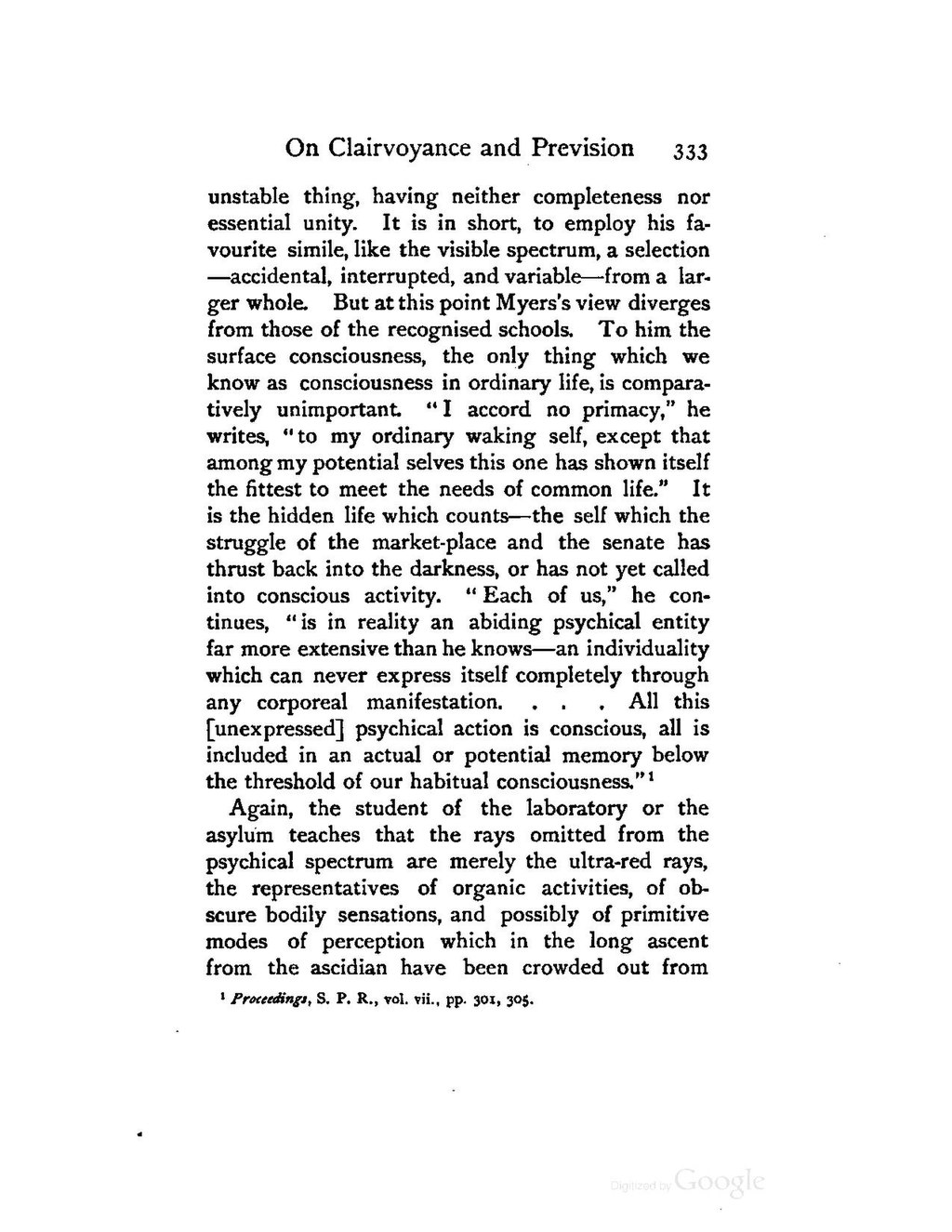unstable thing, having neither completeness nor essential unity. It is in short, to employ his favourite simile, like the visible spectrum, a selection —accidental, interrupted, and variable—from a larger whole. But at this point Myers's view diverges from those of the recognised schools. To him the surface consciousness, the only thing which we know as consciousness in ordinary life, is comparatively unimportant. "I accord no primacy," he writes, "to my ordinary waking self, except that among my potential selves this one has shown itself the fittest to meet the needs of common life." It is the hidden life which counts—the self which the struggle of the market-place and the senate has thrust back into the darkness, or has not yet called into conscious activity. "Each of us," he continues, "is in reality an abiding psychical entity far more extensive than he knows—an individuality which can never express itself completely through any corporeal manifestation. . . . All this [unexpressed] psychical action is conscious, all is included in an actual or potential memory below the threshold of our habitual consciousness."[1]
Again, the student of the laboratory or the asylum teaches that the rays omitted from the psychical spectrum are merely the ultra-red rays, the representatives of organic activities, of obscure bodily sensations, and possibly of primitive modes of perception which in the long ascent from the ascidian have been crowded out from
- ↑ Proceedings, S. P. R., vol. vii.. pp. 301, 305.
